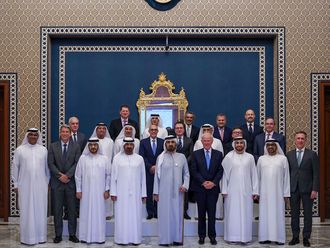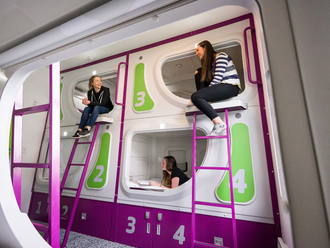As our chauffeured Chevrolet Tavera screeches to a halt, we are quite pleasantly surprised to be treated to some loud, live music playing barely a few feet away.
The foot-tapping beat from the drums and the sweet note of the shehnai (a flute-like instrument) has a distinctly rustic, ethnic charm.
As we make our way towards the main entrance, men dressed in traditional Rajasthani outfits accord us a warm welcome. This is Chokhi Dhani — India's first five-star village resort.
Festive flavours
Situated 23km from Jaipur, Chokhi Dhani (meaning "fine hamlet") is spread over 13 acres of open land that offers you a taste of the north-western Indian state of Rajasthan in all its colour, vitality and ethnicity.
Enjoy elephant and camel rides; watch women dressed in ethnic outfits dancing to folk music; sip some steaming hot tea even as you go shopping for gift items from the rows of little hutments of curio shops; or just watch the antics of the snake charmer, sitting next to a snakepit … Chokhi Dhani offers a whole world of ways to unwind.
And in case you feel just that wee bit tired and hungry, even as you go winding down the earthen roads of the resort, there is a lavish vegetarian buffet dinner spread just waiting round the corner.
Tuck into some makki di roti (hand-made bread typical of northern India), thick yellow dal, try some gatte ki sabzi (a gram flour preparation) or simply treat yourself to some yummy malpua (deep-fried pancakes dipped in a light sugar syrup). It is, in every way, a gourmet's delight.
But more than the food, it is the warm hospitality of the volunteers of the resort that impresses you. They are tireless in their efforts to live up to the catchline that the tourism department of Rajasthan uses for its campaigns — Padharo Mhare Des ('welcome to my land').
"Here, it is 365-day festivity and we are only too happy to try and create a positive impression — be it with our cuisine or culture," says 17-year-old Jitender Singh Rathore, who has been working in Chokhi Dhani for two years now.
While Chokhi Dhani is quite an ideal place to make the most of a late-evening sojourn, no trip to the 'Pink City' — the other name for Jaipur, thanks to its red sandstone palaces and buildings — is complete without a round of the city's fascinating palaces.
If the elephant ride in Chokhi Dhani is unalloyed fun, then the one that takes you to the hill-top that houses Amber Fort is pure thrill.
Located 11km from the city centre, Amber Fort is quite a contrast in itself. From outside, it looks quite rugged and imposing, very much in sync with the surrounding arid terrain. But once inside, you are bound to be taken by surprise by the rich and lavish art works that adorn the walls and ceilings of the fort and its adjoining buildings.
The Sheesh Mahal (house of mirrors) forms the sanctum-sanctorum of the fort. The inner walls and ceiling are decorated by an amazing array of miniature mirrors that reflect light across the halls.
Commenced by Man Singh I in the late 16th century and completed by Sawai Jai Singh in the 17th century, the use of white marble and red sandstone and a very generous sprinkling of vegetable dye make the interiors of the fort look extremely ornate.
Palatial wonder
Hawa Mahal (meaning "wind palace") is the other structure that is unique about Jaipur. It was built in 1792 by Maharaja Sawai Pratap Singh. Once inside the palace, you will be pleasantly surprised to feel the free flow of air all through.
Apart from letting in air, the numerous windows of the palace were designed to allow the royal women a glimpse of the world outside, in general, and the ceremonial processions, in particular.
The Jal Mahal or Lake Palace is another architectural wonder. Built by Sawai Pratap Singh in 1799, right in the middle of the Man Sagar Lake, this palace used to serve as a pleasure spot for contemporary Rajasthani royals. Four floors of the palace are completely under water and what is visible from outside is only its top floor.
Right in the heart of Jaipur is City Palace. Built by Jai Singh between 1729 and 1732, City Palace comprises a high wall within which are several courtyards and other buildings. Much of the smaller buildings surrounding the courtyards have now been transformed into museums.
Curio city
When in Jaipur, do not forget to visit the curio shops at Bapu Bazaar. You may stumble upon a fascinating Rajasthani turban or a pair of ornate leather slippers — all for a bargain.
We concluded our trip with a visit to the Nahargarh Fort, arguably the highest point in Jaipur. We reached Nahargarh just after dusk.
As I peered out of the window of the open-air cafeteria situated above the fort, for a second, my heart skipped a beat. The clear, star-lit sky above and the lights of Jaipur below, formed a fascinating picture which got framed in my mind — much more compelling than what the zoom lens of my Handycam could capture!
And I was left with one thought: "Incredible India"!
Train Tips
An India deal on wheels
If you are thinking about travelling within India by air, think twice. The Indian Railways offers a fantastic network of premium services such as the overnight Rajdhani Express and the inter-city Shatabdi Express trains. The Rajdhani Express trains connect Delhi to the state capitals, while places of tourist interest such as Jaipur and Agra are accessible from Delhi by the Shatabdi Express.
The newly-introduced Linke-Alsthom-Bosche (LHB)-designed coaches, initially imported from Germany but now manufactured in India, make your travel by Rajdhani/Shatabdi a pleasurable experience.
As you relax in the air-conditioned comfort of the neat and tastefully done-up compartment, let the choice of on-board refreshments and meals pamper your taste buds. From piping-hot soup to morning tea, freshly packaged fruit juice to succulent chicken-tikka curry, cornflakes to fried fish. Quite a treat and comparable with the best you can get in India.
The fact that the price for meals on these trains is included in the fare, means you can do without the worries of finding healthy and hygienic food while travelling.
The Delhi-Bhopal Shatabdi Express, that travels via Agra, is the fastest in India right now. Travelling non-stop between Delhi and Agra, it covers the 196km distance in approximately 1 hour and 50 minutes.
So the next time you plan a tour of India, try and take the railways to heart.
Go there...Jaipur
From the UAE
Emirates, Air-India and Indian Airlines fly from Dubai to New Delhi.
Etihad Airways flies from Abu Dhabi to New Delhi.
Air Arabia flies direct to Jaipur from Sharjah.
Indian Airlines flies via New Delhi from Sharjah.
From New Delhi take the superfast New Delhi-Ajmer Shatabdi Express train to Jaipur. It takes roughly four hours to reach Jaipur.
(If you are the adventurous type and time is not a constraint, try the second option. Most flights from the UAE reach New Delhi early in the morning. You can spend the rest of the day at your leisure in any of New Delhi's numerous premium/standard/budget hotels and take the Shatabdi Express train to Jaipur early next morning.)
The best time to visit is from October to March.
How much
From Dubai:
Indian Airlines (to Jaipur) fare: From Dh1,800.
Emirates (to New Delhi) fare: From Dh1,980.
Air-India (to New Delhi) fare: From Dh1,760.
From Abu Dhabi:
Etihad (to New Delhi): From Dh1,550.
From Sharjah:
Air Arabia fare: From Dh1,260.
Indian Airlines: From Dh1,940.
Train fare from New Delhi: First AC: Dh114.
Where to stay
Jaipur offers a wide range of standard/budget and star category hotels to suit your taste. But if you are keen on staying in a royal ambience and enjoying a taste of the city's regal past, try the heritage hotels.
Budget option: Hotel Khasa Kothi
Star category/Heritage hotels:
Rambagh Palace (Tel: 0091-141-381919);
Jai Mahal Palace (Tel: 371616);
Rajmahal Palace (Tel: 381676);
Hotel Clarks Amar (Tel: 550616);
Mansingh Hotel (Tel: 378771);
Hotel Jaipur Ashok (Tel: 322999).


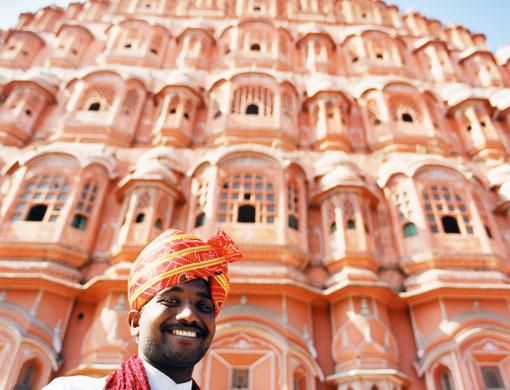

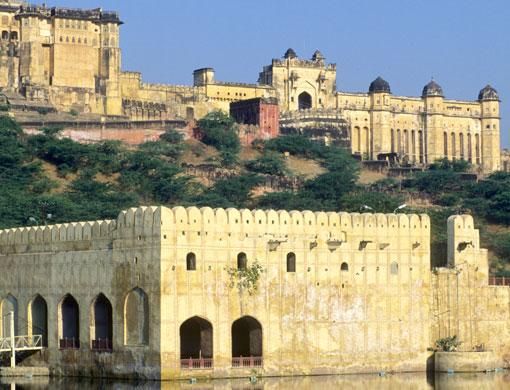
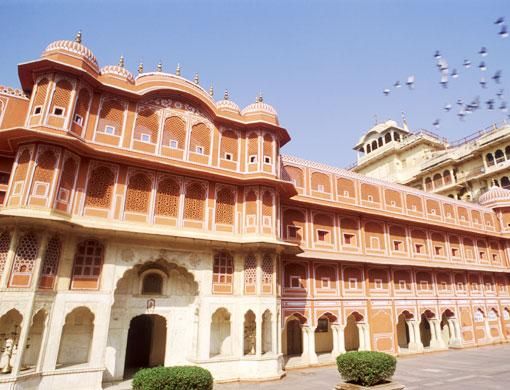
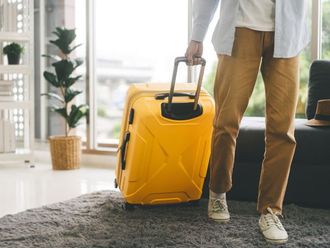

_resources1_16a08544951_small.jpg)
